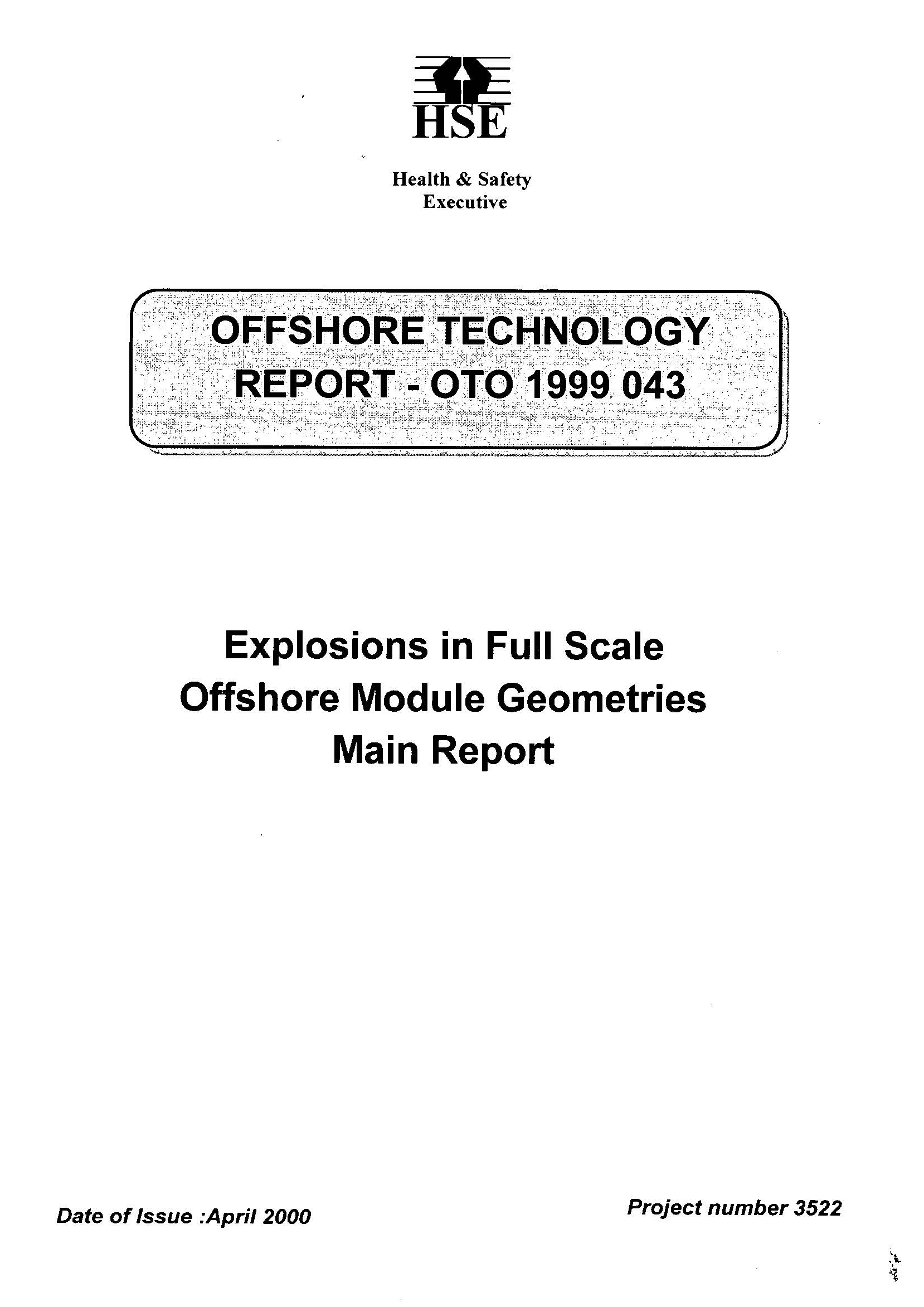HSE OTO 99 043
Explosions in full-scale offshore module geometries
Main report
BFETS Phase 3a

FABIG Members: Log-in to access all FABIG resources LOG IN
SUMMARY
This is the main report for BFETS Phase 3a.
In 1997, Phase 2 of the BFETS project was completed and the results showed that high explosion overpressures could be generated for certain configurations and that water sprays activated prior to ignition could significantly reduce these overpressures. This led to an initiative by the HSE to obtain further data which explored the mechanisms which led to high overpressures and ways of mitigating them, for example, by reducing perimeter wall confinement and by the use of water deluge. The overall objectives of the work were to:
- Provide information on the reduction of explosion overpressures in the design of new and modified offshore installations;
- Identify mitigation measures to reduce explosion overpressures on existing installations;
- Provide test data for use in the validation of explosion models.
The HSE funded project, known as Phase 3a, was conducted between May 1997 and March 1998 and comprised of 45 experiments conducted in a test rig representing, at full scale, an offshore module. During each experiment the test rig was filled with a gas / air mixture and ignited by a single spark at a specified location. The programme commenced with the first series of experiments (comprising seven tests) with confinement only present at the floor and roof. This series included both 'dry' tests and those with full area deluge. The next series of experiments (comprising eight tests) involved confinement on one long wall as well as the floor and roof. Again, both 'dry' tests and those with deluge were included, in the form of full area deluge and deluge curtains. The remaining thirty experiments were conducted with no wall confinement and with part of the roof removed. During these tests, various deluge systems including full area deluge, water curtains and vessel specific deluge, were studied. The equipment layout inside the module was also modified to include a greater equipment density and the inclusion of scaffolding. This final test series also incorporated eleven experiments (a set of five and a set of six) which were designed to study the repeatability of the results.
The full report is publicly available from the HSE Website at www.hse.gov.uk/research/otopdf/1999/oto99043a.pdf
Online purchase options:
Non-Members of FABIG are able to purchase PDF copies of the reports.